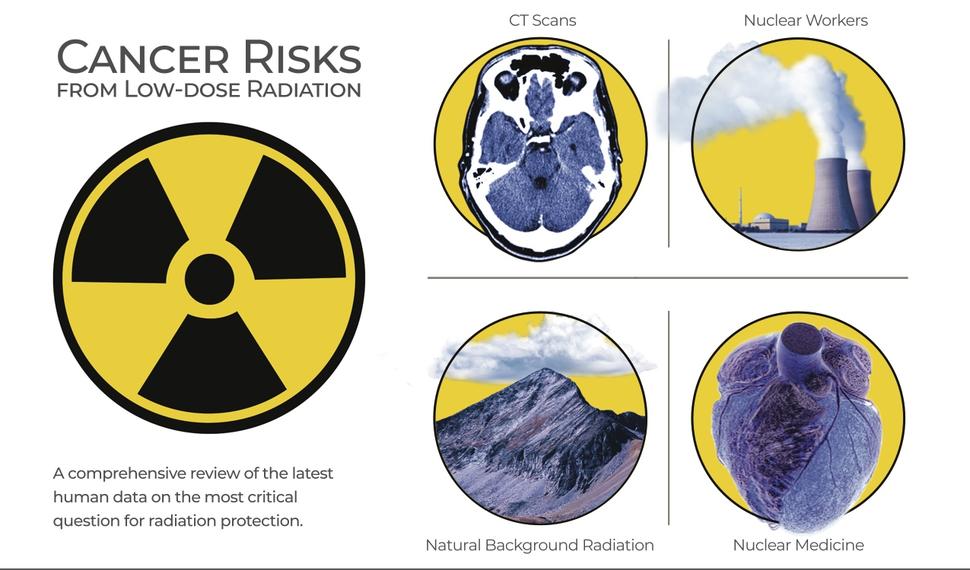Low Dose Ionizing Radiation Shown to Cause Cancer in Review of 26 Studies
, by DCEG Staff
An international team of experts in the study of cancer risks associated with low-dose ionizing radiation published the monograph, “Epidemiological studies of low-dose ionizing radiation and cancer: Summary bias assessment and meta-analysis,” in the Journal of the National Cancer Institute on July 13, 2020.
It is well established that ionizing radiation causes cancer through direct DNA damage. The general public are exposed to low doses of ionizing radiation from medical exposures like computed tomography (CT) scans, naturally occurring radiation (emitted from bedrock with the earth’s crust and cosmic rays emitted by the sun), and occupational exposures to medical, aircrew and nuclear workers. A key question for low-dose exposures is how much of the damage can be repaired and whether other mechanisms, including inflammation, also play a role. This critical question has been long debated for radiation protection standards.
After combing data from 26 epidemiological studies the authors found clear evidence of excess cancer risk from low dose ionizing radiation: 17 of 22 studies showed risk for solid cancers and 17 of 20 studies showed risk for leukemia. The summary risk estimates were statistically significant and the magnitude of risk (per unit dose) was consistent with studies of populations exposed to higher doses.
A novel feature of the research effort was the investigators’ use of epidemiological and statistical techniques to identify and evaluate possible sources of bias in the observational data, for example confounding, errors in doses, and misclassification of outcomes. After a thorough and systematic review, they concluded that most did not suffer from major biases.
The authors concluded that although for the most part, absolute risk of cancer will be small, the data reinforce the radiation safety principle to ensure that doses are “as low as reasonably achievable” (ALARA).
Additional research is needed to explore risks for cardiovascular disease (CVD) at low doses. Because CVD is a very common disease, even small risks at low doses could have important implications for radiation protection and public health.
The 26 epidemiological studies were published between 2006 and 2017 and included a total of 91,000 solid cancers and 13,000 leukemias. Studies were eligible if the mean dose was <100 mGy. The study populations had environmental radiation exposure from accidents, like Chernobyl, and natural background radiation, medical radiation exposure like CT scans and occupational exposure including nuclear workers and medical radiation workers.
Reference:
“Epidemiological studies of low-dose ionizing radiation and cancer: Summary bias assessment and meta-analysis,” JNCI Monographs. Volume 2020. Issue 56. July 2020.
